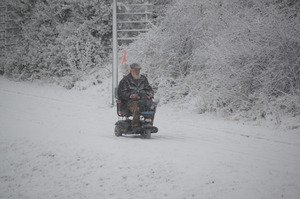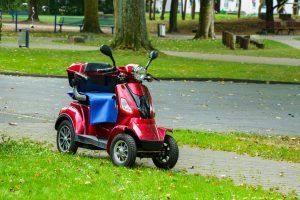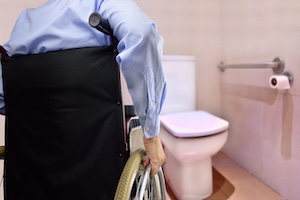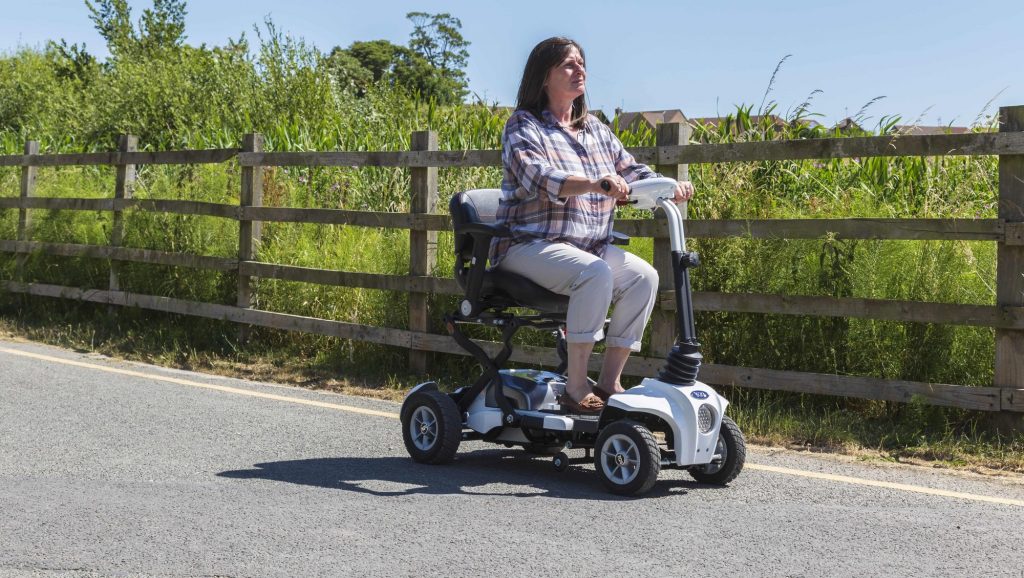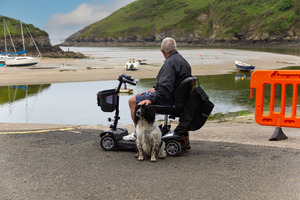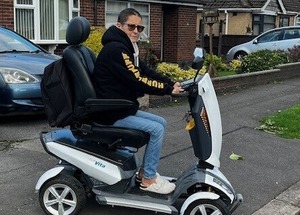Many people who use a mobility scooter also use a wheelchair of some sort for use around the home, or when the bulk and speed of a mobility scooter isn’t appropriate.
Sometimes, however, it can be confusing to know what mobility device you need – and indeed, which is most suitable for your needs.
While you don’t need to pick one or the other necessary, it can be helpful to know the key differences. Here, we’ve highlighted some of the major differences, uses, and capabilities of mobility scooters vs power wheelchairs.
Did you know we insure mobility scooters, standard wheelchairs, and power wheelchairs? Find out more and compare quotes today.
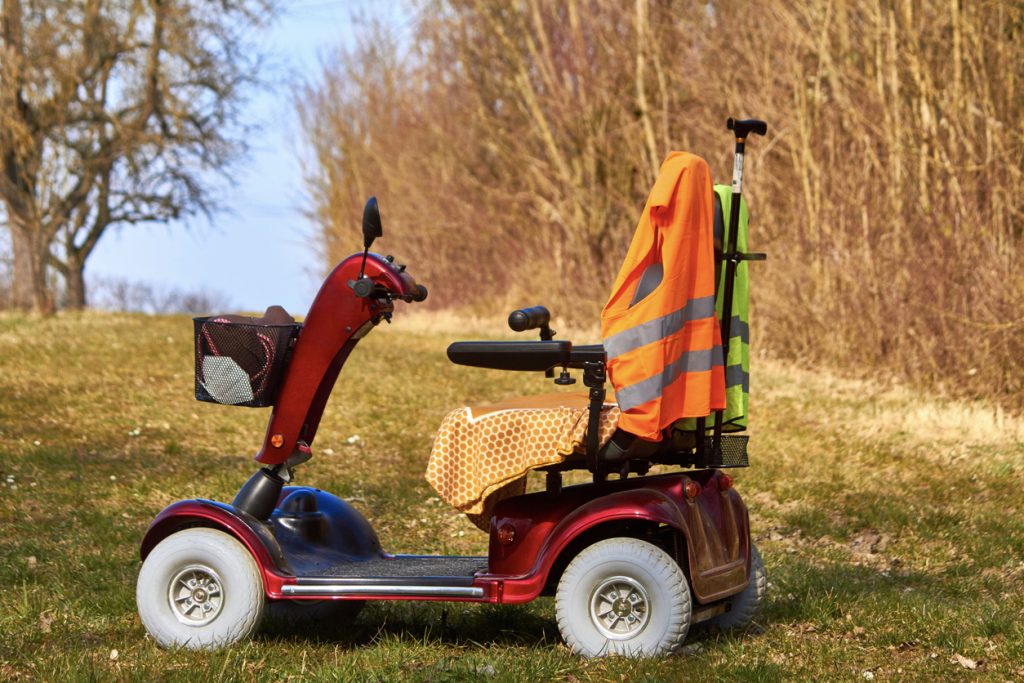
1. Design and Structure
Mobility scooters generally have a more straightforward design, often resembling a small motorised vehicle with handlebars. They usually come with three or four wheels (depending on the class of mobility scooter owned) and can have a swivelling seat, making them easy to mount and dismount.
Power wheelchairs, on the other hand, are designed with more complex controls, typically using a joystick for steering. They often have a more robust build, providing better support and comfort for use indoors.
2. Intended Use
Mobility scooters are typically designed for those who can still manage some walking but need assistance over longer distances or for outdoor use. They are ideal for shopping trips, running errands, or casual outdoor activities. Read about the rules and regulations for mobility scooters in the UK.
Power wheelchairs are more suited for individuals with more severe mobility impairments who need continuous support. They are often used both indoors and outdoors and are designed to navigate tight spaces and somewhat uneven terrain with ease.
3. Capabilities and Features
Mobility scooters offer good battery life and are generally faster than power wheelchairs, making them suitable for longer outdoor trips (checkout these fantastic accessible destinations in the UK). However, they may struggle with rough terrain and are less manoeuvrable in confined spaces.
Power wheelchairs come with advanced features like tilt, recline, and elevation, offering more personalised comfort and support. They excel in navigating various terrains, including indoors.
4. Portability
Mobility scooters tend to be more portable, with many models designed to be easily disassembled for transport in a car boot. This makes them a convenient option for those who need to travel, whether that’s by car, train, or other, frequently.
Power wheelchairs, due to their more complex build and weight, are generally less portable. They often require a specially adapted vehicle for transport, making them more suitable for those who need a consistent mobility solution.
5. Cost and Maintenance
Mobility scooters are generally less expensive than power wheelchairs, with lower upfront costs and simpler maintenance. This can make them a more accessible option for those on a budget.
Power wheelchairs, while more costly, offer a higher level of customisation and comfort. The investment reflects the advanced technology and support features they provide, which can be crucial for users with significant mobility challenges.
Peace of mind when using your mobility device can be as crucial as the device itself – knowing the financial cost of repairing or replacing the mobility aid is covered when you’re out and about.
Find out more about our mobility insurance – starting from just £3.80 per month – and how it can help you today.

